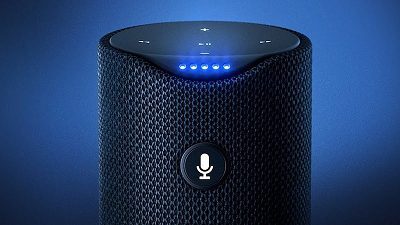Amazon has reportedly been talking with major CPG companies, including Procter & Gamble and Clorox, about introducing digital ads to its Alexa voice platform, according to CNBC. Early discussions have focused on whether companies would pay for higher placement when a consumer searches for a product on their Echo device — similar to the way paid searches put sponsored results higher up in Google search results.
Both voice and digital advertising are becoming major forces in the retail and CPG industries. Amazon claims that millions of Prime members used Amazon Alexa to shop by voice for gifts during the 2017 holiday season, and that the Echo Dot was the number-one selling Amazon Device during this period. Amazon Echo had 70.6% of voice assistant user share in May 2017, more than triple the 23.8% of Google Home, according to eMarketer. Overall, eMarketer forecasted that 35.6 million Americans would use a voice-activated assistant at least once a month in 2017, a 129% increase over the previous year.
Will Consumers Want To Silence Voice Ads?
There are risks in selling advertising on voice platforms. While it’s easy for a shopper to scroll past a labeled ad on a desktop or mobile device, there’s much more “inertia” with voice platforms. Users would presumably need to verbally request another brand option if they don’t want to purchase Clorox bleach or Tide detergent.
“I think [ads on voice platforms] would be a turn-off,” said Paula Rosenblum, Managing Partner at RSR Research. “It would likely be followed by the ‘Pay $9.99 per month for the ad-free version.’ You’d think Amazon would be happy with its captive ecosystem. I guess not.”
Other industry experts see greater potential for benefits. “I believe this is a good thing for advertising in general,” said Sam Cinquegrani, CEO of ObjectWave, a digital strategy and services firm. “We need more space not less, whether that be voice or click ads. It’s a good move as long as the consumer accepts it. And like most ad platforms, giving the consumer a chance to turn it off is a smart move. But not everyone is annoyed by ads.”
Consumer acceptance will be heavily influenced by the content and style of voice platform advertising. “I’d recommend that any ad material should give listeners a reason to not want to switch them off, particularly given the medium,” said Cinquegrani in an interview with Retail TouchPoints. “This is Alexa, not radio. So by focusing more on being informative and less on being promotional or a hard sell, CPGs are more likely to succeed. This works very much along the same lines as content marketing.”
Brands also will need to tread lightly in terms of how consumers perceive the way their personal data is being used, in order to avoid the “creep factor.”
“Consumers will likely be concerned that these ads may interfere with their anonymity as well as privacy,” said Marshal Cohen, Chief Industry Analyst, The NPD Group in an interview with Retail TouchPoints. “They are already fighting the privacy issue. But consumers are also used to ads invading their space. Cable TV, Sirius Radio and even apps they download on phones now all come with ads. All once promoted as ‘ad free’ now come with them. So over time I suspect the objections will fade.”
Amazon’s primary competitor in the voice realm — Google — has focused on product partnerships with retailers rather than advertising. Walmart announced in August 2017 that it would make thousands of items available for voice shopping via Google Assistant. The retailer integrated its Easy Reorder feature into the platform, enabling existing customers to link their Walmart accounts to Google and receive personalized shopping results based on previous online and in-store Walmart purchases.
Amazon Moves Aggressively Into Digital Advertising In 2018
The Alexa news followed a Dec. 26, 2017 CNBC report that Amazon will be making a major push into digital advertising this year, challenging industry leaders Google and Facebook. Most of the conversations are focusing on e-Commerce search and video products. Amazon also plans to partner with third-party tech companies to sell partnered TV and mobile ads.
Digital and mobile advertising is projected to grow 13% in 2018 to reach $237 billion, or 44% of global ad revenues, according to Magna Global. The media buying research firm forecasts that by 2020, this type of advertising will comprise 50% of the total global ad spend.













